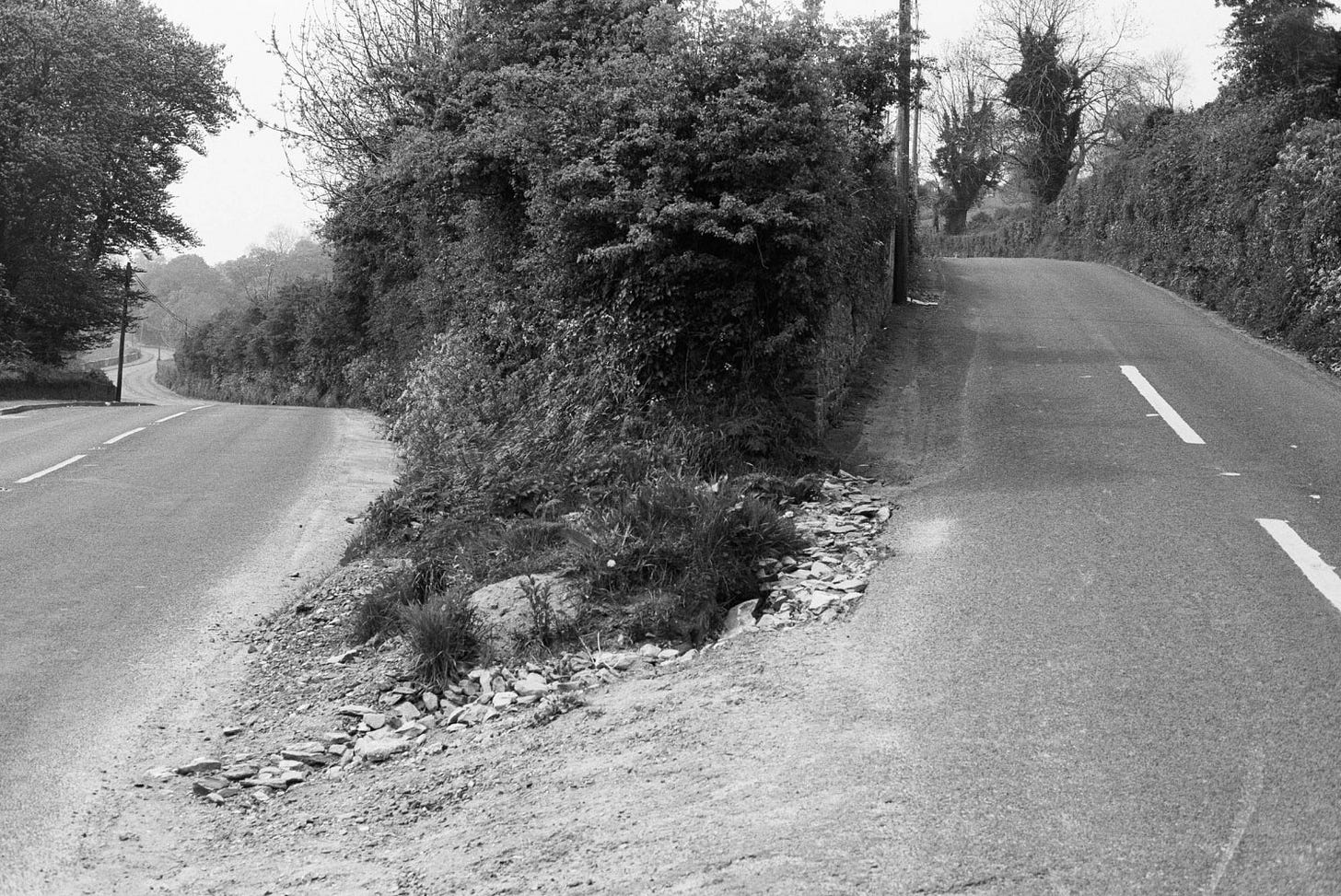Willie Doherty | Part 2
Flyover Ghost Walk, 1985/2012 | Derry, 1985/2012 | To the Border: A Fork in the Road, 1986/2012 | Enclave: Dividing Wall, 1987/2012 | Back: The Walls, 1991/2013 | Dead End, 2024 | & more...
AS I WAS MOVING AHEAD OCCASIONALLY I SAW BRIEF GLIMPSES OF BEAUTY is a very simple newsletter where I share a collection of creative expressions I enjoyed coming across.
This is the second part of the series on Willie Doherty. Click here to read part 1.
In this most recent series, Doherty’s starkly atmospheric images reveal the residual traces that mark the surfaces and fabric of natural and built environments. Places that have been formed by the long slow processes of geological time and that have been shaped by the consequences of human intervention: conflict, inequality, neglect, and injustice.
These are works that are characterized by Doherty’s watchful reticent intensity, and by his assertion that the image cannot be fixed, cannot be fully comprehended and known. His attention draws us to the small details and nuances of diverse spaces, the materiality of brick, concrete, metal, grass, trees, and wildflowers. There is an unsettled, restless sense of place. Everywhere there are indications of disorder, breakdown, and failure coexistent with signs of growth, recovery, and endurance.
Poetry is found in the most reluctant of places. The brutality of decay transforms into a still and silent beauty, the ambiguity of oppositions yielding to a serene resoluteness existing between somewhere and nowhere. Unfamiliarity is exposed in familiar territory, as disregarded landscapes are no longer forgotten, their histories becoming the fictions of memory.
The passage of time, and the eventual erasure of all traces, pervades these images through the uneasy quiescence between what was and what is, what is and is not. In Doherty’s work, the sublime is determinate, the ignored no longer unseen. Kerlin Gallery
There can be no image that is not about destruction and survival, and this is especially the case in the image of ruin. We might even say that the image of ruin tells us what is true of every image: that it bears witness to the enigmatic relation between death and survival, loss and life, destruction and preservation, mourning and memory. Eduardo Cadava, “Lapsus Imaginis”: The Image in Ruins, 2001
Doherty’s work has been associated with the aesthetics of what is termed late photography, a term coined by the critic David Campany to describe imagery possessing “a post-traumatic disposition” and that is linked to issues of memory, referring to what is absent as much as what is present in the landscape. Donal Maguire
Our emotional and psychological response to a place is not something that stopped in 1998 with the ceasefire. Many of the unresolved traumas that people have experienced, to some extent, still exist. They’re often embodied within places; people have had experiences associated with certain places or landscapes. Other people talk about driving through Northern Irish countryside and you come across a road sign that says the name of the town or the place and you’re immediately reminded of what happened there. Willie Doherty
To me that’s what makes it interesting to live and work here; that sense of things being not finished, unresolved. I don’t think in terms of projects. I’m in the middle of something called my life and I’m just doing stuff along the way. Willie Doherty
Another insight offered by ‘UNSEEN’ was a series of archival negatives taken in the mid-1980s that Doherty has recently printed for the first time. Of these, To the Border/A Fork in the Road (1986/2012) is perhaps the most extraordinary. It is a photograph of a loop of road that Doherty snapped in 1986, 14 years before a man accused of being a British informer was executed there. The image is a ghostly accident, an inadvertent anticipation of death. Frieze Magazine

















